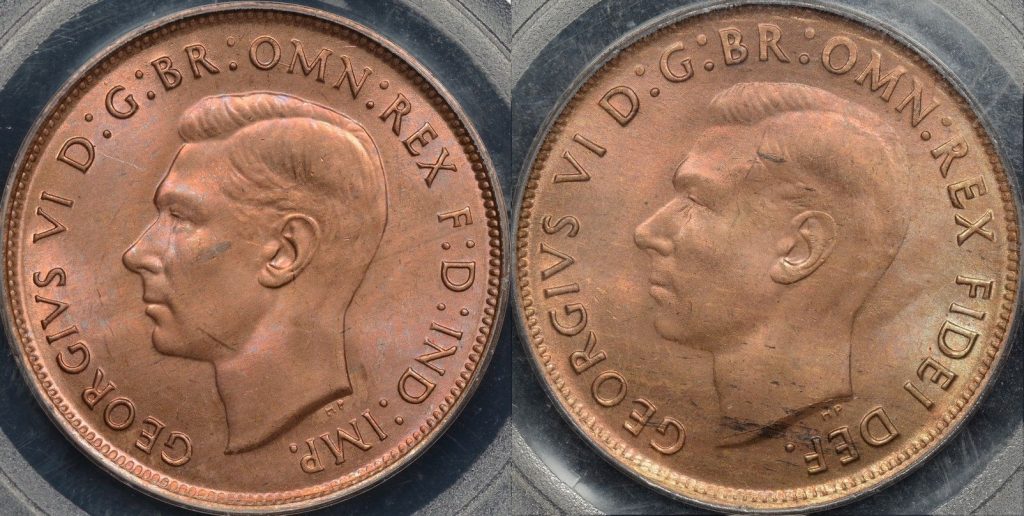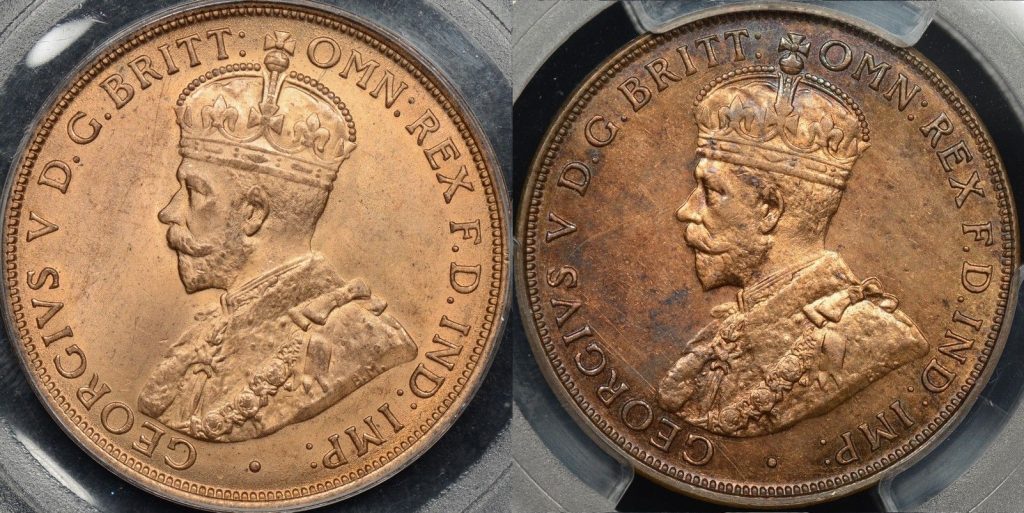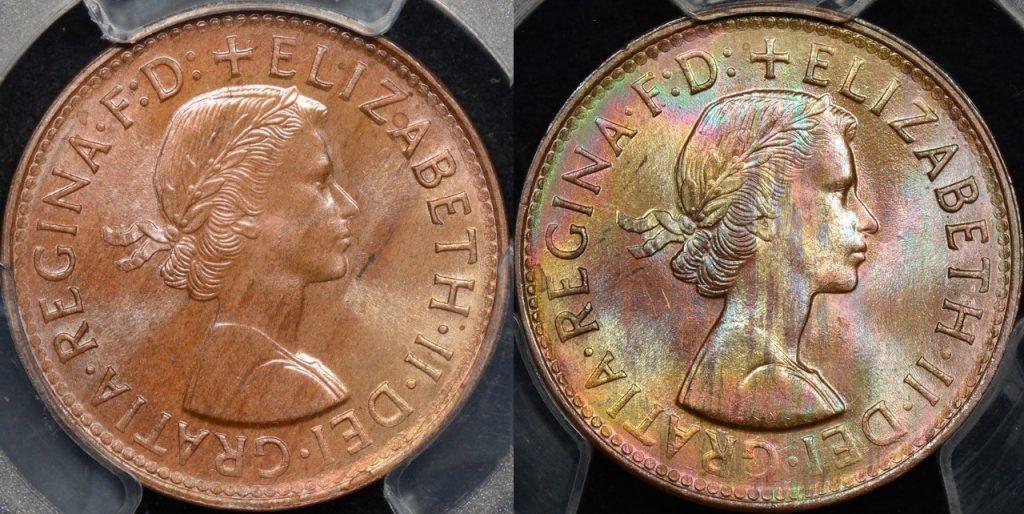You are probably aware that the three major independent grading companies (PCGS, NGC, and ANACS) all give mint state graded copper coins a colour designation using the RD, RB, and BN codes. In this article I’ll talk about PCGS and how they seem to apply the colour codes and some things you should take into account before buying a coin based on the colour codes. Firstly, let’s have a look at how PCGS apply the colour codes, as per the PCGS website.
RD – Red – more than 95% original red colour
RB – Red-Brown – between 5% and 95% original red colour
BN – Brown – less than 5% original red colour

The first thing we note from this is that it will be extremely difficult to get a RD coin if there is any age to the coin. The difficulty in achieving a RD coin emphasised by the fact that PCGS offers bonus points for registry sets that contain RD coins. For those that don’t know what registry sets are, they are basically pre-defined sets of coins that collectors can put together and PCGS maintains a ‘scoreboard’ of the best collections. What actually makes a RD coin is (in my opinion) largely subjective. I have seen coins that would be called full red by coin dealers in Australia that only achieve the RB grade, and I have seen others graded as RD that have toning spots and stripes that clearly ARE NOT 95% original red. Then there are Australian pennies and half pennies struck at the Perth mint in the 1950’s and 60’s. Collectors will be fully aware that in some years Perth coins were simply not struck with full blazing orange planchets, but rather with an attractive glossy pink planchet. These coins, when found completely untoned and in as struck condition simply will not achieve the RD designation. In this case PCGS are applying their definition of what ‘red’ copper (based on American minting standards) is. For some dates and mints there simply aren’t coins that will fall into the designated colour range. Seen above you can see two pennies, one is RD, the other RB. Even in hand I find it hard to see why the coin on the right is only RB!

The second thing to note is that a RB coin basically covers a coin ranging from almost totally red to totally brown but all with the same notation on the grade. Seen above you can see two pennies that have been graded MS65RB. Both are true gem coins, beautifully struck, minimal bag marks, and worthy additions to any collection. However one would almost certainly be graded as full red by any Australian coin dealer, the other probably only has 10-15% of the original mint red still present.

The final thing to note about RB and BN coins is that absolutely no indication is given in the colour code of the ‘eye appeal’ of a coin. Perth struck copper coins of the 1950’s and 60’s can have stunning rainbow toning that can sometimes have an effect on the value of a coin. Rainbow toned coins will almost always be graded with the RB or BN designations. After all, a lovely rainbow penny with the BN designation is surely a more appealing coin that a toned dark brown coin with the same grade and colour designation. Seen above you can see one coin with an attractive rainbow patina, and the other an even brown colour. Both have the BN (Brown) designation, which is more appealing?
If you examine what I’ve said in each of these cases there is one prevailing theme. A PCGS graded coin tells you that the coin has almost certainly not been tampered with (cleaned or mechanically altered), and it also tells you that the coin is almost certainly genuine, and the assigned numerical grade gives you a great starting point as to the quality of the coin. However, it tells you nothing of eye appeal, it doesn’t account for the vagaries of Australian coins, and the colour designations seem to be rather loosely applied. That all being said the grade and colour code are a starting point, as always you should be buying the coin and not the grade on the slab in which it is enclosed. This is especially important with Australian copper coins, as the PCGS grading system does not (and probably can never) describe the beauty that these coins can sometimes achieve.
